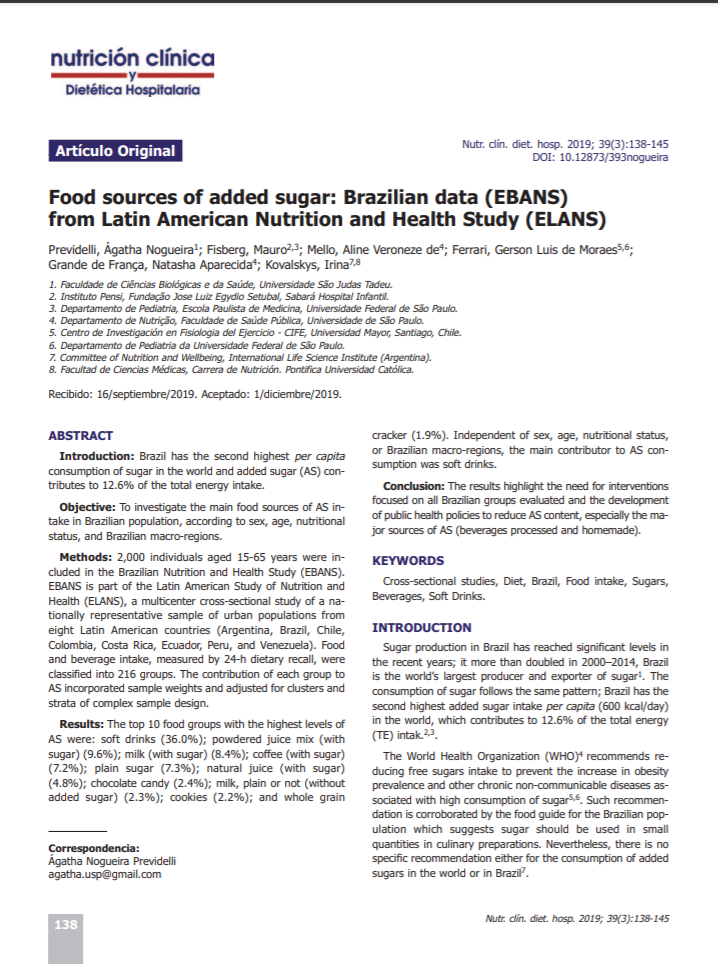Food sources of added sugar: Brazilian data (EBANS) from Latin American Nutrition and Health Study (ELANS)

Fecha
2019Autor
de Moraes Ferrari, Gerson Luis [Univ Mayor, CIFE, Santiago, Chile]
Previdelli, Agatha Nogueira
Fisberg, Mauro
Mello, de Veroneze Aline
Grande de Franca, Natasha Aparecida
Kovalskys, Irina
Ubicación geográfica
Notas
HERRAMIENTAS
Acceda a títulos restringidos
¿Cómo descargar?Resumen
Introduction: Brazil has the second highest per capita consumption of sugar in the world and added sugar (AS) contributes to 12.6% of the total energy intake. Objective: To investigate the main food sources of AS intake in Brazilian population, according to sex, age, nutritional status, and Brazilian macro-regions. Methods: 2,000 individuals aged 15-65 years were included in the Brazilian Nutrition and Health Study (EBANS). EBANS is part of the Latin American Study of Nutrition and Health (ELANS), a multicenter cross-sectional study of a nationally representative sample of urban populations from eight Latin American countries (Argentina, Brazil, Chile, Colombia, Costa Rica, Ecuador, Peru, and Venezuela). Food and beverage intake, measured by 24-h dietary recall, were classified into 216 groups. The contribution of each group to AS incorporated sample weights and adjusted for clusters and strata of complex sample design. Results: The top 10 food groups with the highest levels of AS were: soft drinks (36.0%); powdered juice mix (with sugar) (9.6%); milk (with sugar) (8.4%); coffee (with sugar) (7.2%); plain sugar (7.3%); natural juice (with sugar) (4.8%); chocolate candy (2.4%); milk, plain or not (without added sugar) (2.3%); cookies (2.2%); and whole grain cracker (1.9%). Independent of sex, age, nutritional status, or Brazilian macro-regions, the main contributor to AS consumption was soft drinks. Conclusion: The results highlight the need for interventions focused on all Brazilian groups evaluated and the development of public health policies to reduce AS content, especially the major sources of AS (beverages processed and homemade).
URI
https://revista.nutricion.org/PDF/NOGUEIRA.pdfhttp://repositorio.umayor.cl/xmlui/handle/sibum/6709
Coleccion/es a la/s que pertenece:
Si usted es autor(a) de este documento y NO desea que su publicación tenga acceso público en este repositorio, por favor complete el formulario aquí.